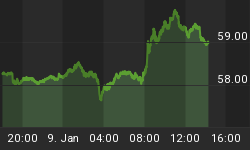In my most recent appearance on CNBC I debated Arthur Laffer, who gained fame during the Reagan administration for sketching his controversial "Laffer Curve" on a cocktail napkin. The encounter reaffirmed my belief that the same napkin would probably be large enough to hold the sum total of his economic wisdom.
In the pointed debate, the impeccably genial Mr. Laffer claimed that the U.S. economy has never been healthier, was not dependant on housing, and will be unfazed by higher interest rates. He described current monetary policy as "spectacular", declared wealth had risen dramatically, asserted our trade policy was working "beautifully," attributed our trade deficit to foreigners outsourcing their monetary policy to America, and claimed that history had shown that such external deficits were not harmful.
Although I would love to refute all of his absurd positions, two in particular stand out as worthy of discussion.
First, Laffer compared today's current account deficits to those experienced during America's first two hundred years as a developing nation. This flawed comparison ignores that as a developing nation America borrowed to invest. Those current account deficits funded the construction of vast infrastructure, such as roads, canals, ports, and rail roads, as well the formation of capital equipment, farms, and factories, all of which fueled American productivity. Such investments enabled the production of vast quantities of consumer goods, which America sold back to its creditors, to both pay interest and retire principle. In the end, America's creditors got consumer goods, and America became the wealthiest industrial nation the world had ever seen, in the process turning its current account deficits into enormous surpluses.
In a "night and day" contrast, today's current account deficit has the much more limited role of solely financing consumer spending. Borrowing to produce is the way poor nations become rich. Borrowing to consume is the way rich nations become poor. By squandering borrowed money on consumption, America has no way to repay the principal of its debts, let alone the interest. Borrowing to build factories is not the economic equivalent of borrowing to buy flat panel, high definition televisions, and it's amazing that Laffer can't see the difference.
Second, Laffer confused legitimate wealth creation with the mere paper appreciation of stocks and real estate. Real wealth creation refers to additions made to the capital stock or improvements made to land; such as constructing new homes, building new factories, opening new mines, laying new infrastructure, planting new farmland, etc. However, if an unimproved house simply appraises for twice its value of five years ago, how is society any wealthier as a result? The house provides no more shelter now than it did then. If stock prices rise merely as a result of multiple expansions, what real wealth has been created?
Though assets themselves may reflect wealth, their prices do not. Assets are wealth because they enable the satisfaction of human desires. In the case of factories it's the ability to produce products, in the case of houses it's the ability to provide shelter. Prices merely reflect the perceived value of those abilities and can change substantially over time. The point Laffer misses is that asset prices can fall just as easily as they can rise. Real wealth on the other hand, though it may depreciate if not maintained, barring natural or man made disaster, is far more lasting.
America's paper wealth however is merely a dream that will soon vanish. Perhaps it's our gargantuan trade deficit that will actually provide the wake up call. When it does all that will remain will be the debt. As higher interest rates make servicing that debt impossible, the dream will become a horrific nightmare. Perhaps if I drew it out on a napkin Laffer might finally get the picture.
Don't wait for reality to set in. Protect your wealth and preserve you purchasing power before it's too late. Discover the best way to buy gold at www.goldyoucanfold.com, download my free research report on the powerful case for investing in foreign equities available at www.researchreportone.com, and subscribe to my free, on-line investment newsletter at http://www.europac.net/newsletter/newsletter.asp.
















